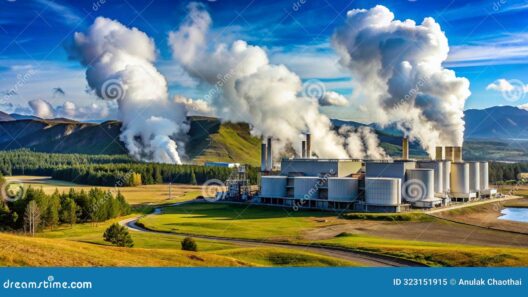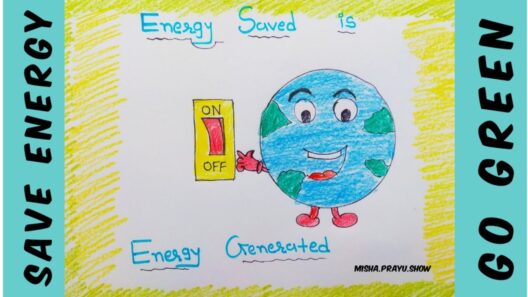In an age where climate change looms large, every individual bears the weight of our environmental footprint. Yet, while daunting, the challenge faced is not insurmountable. Energy conservation stands as a beacon of hope. It may seem that the enormity of the task calls for grand gestures, but empirical evidence suggests a collection of small, cogent actions can yield substantial outcomes. Let’s delve into the practical ways to practice energy conservation each day, revealing how minor adjustments can effectuate significant change.
Rekindling the Basics of Energy Conservation
To begin with, understanding the fundamentals of energy consumption is essential. Energy is an omnipresent force that powers our lives, but with such power comes the responsibility to use it judiciously. Simple habits can make an enormous difference—from turning off lights when leaving a room to unplugging devices that draw phantom energy when not in use. This consciousness about our energy usage cultivates a habit of conservation.
The First Step: Mindful Usage
Mindfulness is a powerful tool when it comes to energy. Consider the devices and appliances in your home. Are they optimized for energy efficiency? Older appliances can be energy hogs that dramatically increase your monthly energy bill. By replacing them with ENERGY STAR-rated devices, you can conserve energy and mitigate waste. Not only does this save money over time, but it also decreases your carbon footprint, setting a precedent for those around you.
Climate-Control Consciousness
Another surprisingly impactful area is climate control within the home. Adjusting your thermostat by just a few degrees can lead to a substantial reduction in energy consumption. Moreover, employing natural ventilation by opening windows or using ceiling fans ensures fresh air circulation while minimizing reliance on air conditioning systems. In winter, use solar energy to your advantage—open curtains during the day to allow warmth from the sun in and close them at night to hold in the heat.
Light Your World Wisely
Lighting accounts for a significant portion of household energy use. Transitioning to LED lighting is not merely an upgrade; it is a necessity. LEDs consume at least 75% less energy than incandescent bulbs and last significantly longer. Additionally, employing smart lighting systems—such as timers and motion sensors—can lead further to optimizing energy expenditure. Under this innovative paradigm, lighting becomes not just a functional necessity, but a thoughtful decision in energy conservation.
Water Conservation: The Overlooked Asset
Water and energy conservation go hand in hand. Heating water is one of the most energy-intensive processes in the home. By installing low-flow fixtures or taking shorter showers, one can reduce both water and energy usage. Additionally, consider the practice of collecting rainwater for irrigation purposes, enhancing not just energy efficiency, but also water preservation in the local ecosystem.
The Digital Dimension: Technology and Conservation
In our technologically driven world, devices proliferate, leading to increased energy use. However, technology can also be our ally. Home automation systems can regulate energy use by tracking consumption patterns and optimizing usage schedules. Furthermore, embracing renewable energy solutions, such as solar panels, converts the sun’s energy into usable electricity, drastically reducing reliance on fossil fuels. Investing in such technology may entail upfront costs but pays dividends in energy conservation and environmental stewardship.
Transportation Transformation
Personal transportation is another area ripe for energy conservation efforts. The shift from traditional fossil-fueled vehicles to hybrids or fully electric options not only diminishes individual energy consumption but also contributes to a broader societal change. Additionally, fostering a culture of shared rides, using public transportation, cycling, or even walking can significantly curtail energy use while improving overall health and community connectivity.
Composting and Waste Management
Conserving energy extends beyond electricity; it encompasses a holistic approach to resource management. Engaging in composting reduces food waste, enhancing soil quality and diminishing the need for synthetic fertilizers, which often require energy-intensive production processes. Moreover, being judicious about waste management—recycling and reducing single-use plastics—can lead to a sustainable lifestyle, influencing others nearby.
Community Engagement: A Collective Approach
The ripple effect of individual actions can be profound when coupled with community involvement. Forming or joining local conservation groups amplifies the impact of energy-saving habits. Participating in community workshops or educational programs not only spreads knowledge but also motivates others to adopt energy-efficient practices. When communities unite for a common cause, the potential for creating substantive change multiplies exponentially.
The Shift in Perspective
Adopting an energy-conservative mindset may require a transformative shift in how we perceive our responsibilities as stewards of the Earth. Every small change we choose to embrace echoes the powerful truth: collective actions culminate in monumental shifts. Understanding that energy conservation is not solely a personal commitment, but a societal obligation, undoubtedly piques curiosity about our roles and impacts within this expansive web of life.
The Promise of a Different Tomorrow
In conclusion, practicing energy conservation every day transcends mere habit; it becomes a way of life revitalized by intention. By making small, deliberate choices, we herald a sweeping change that resonates far beyond our immediate surroundings. Together, we can forge a path toward a more sustainable future, ensuring that the Earth remains vibrant and thriving for generations to come. Let us commit ourselves today to these small steps, invoking the promise that they will indeed produce a big impact.







